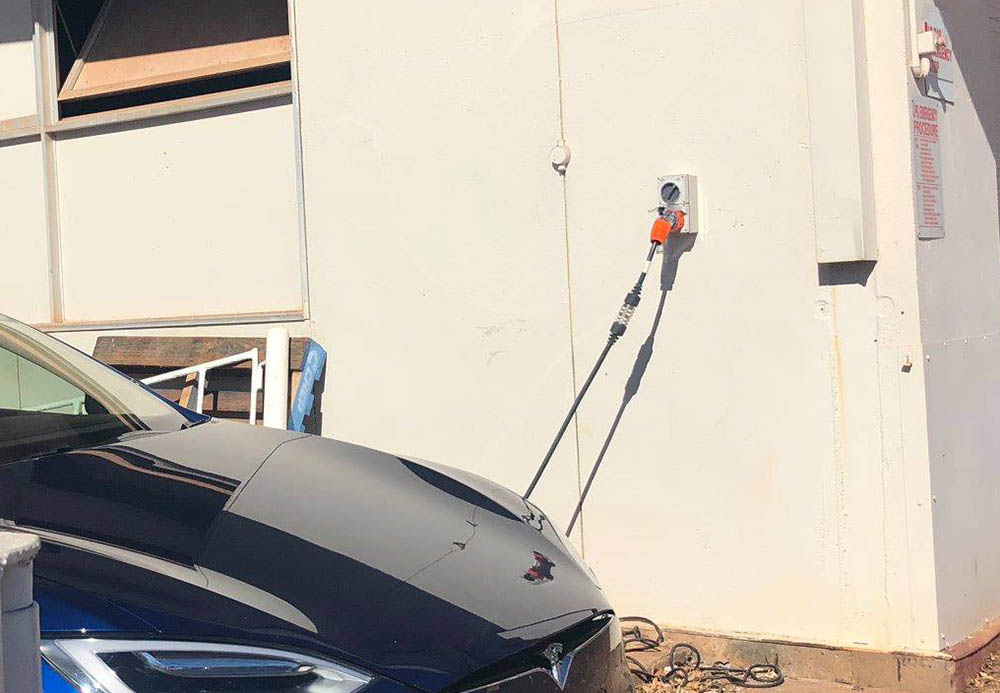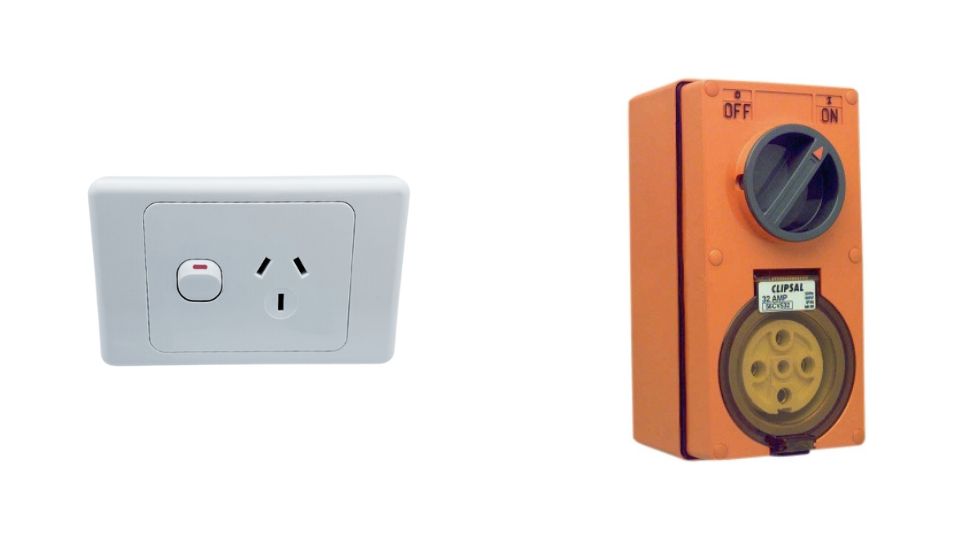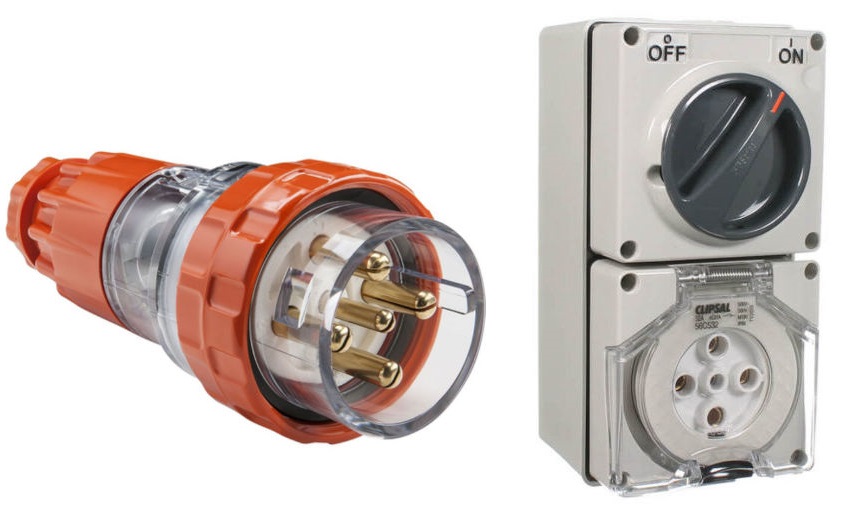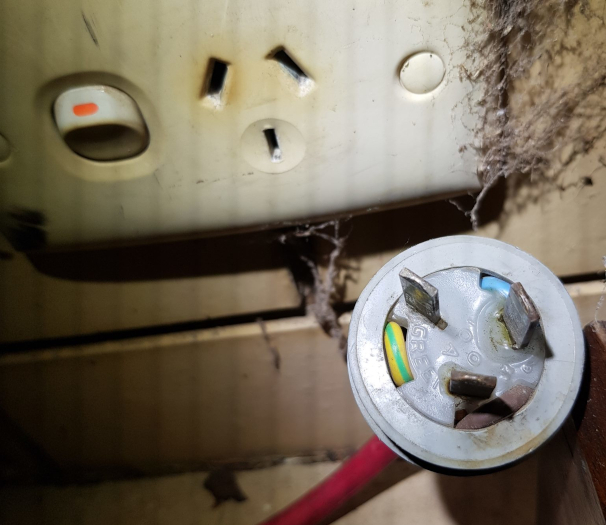32-Amp Sockets for EV Charging: Everything You Need to Know
Last Updated: 12th Dec 2024 By Finn Peacock, Chartered Electrical Engineer, Fact-Checked by Anthony Bennett, Licensed Electrician

When it comes to charging your EV at home, you might not need all the bells and whistles that a hard-wired Level 2 charger provides. You just might need an affordable solution. In this case, a dedicated socket with increased amps might suffice.
Options like 32-amp sockets are becoming increasingly popular for EV owners. Originally designed for heavy-duty applications, such as powering heavy machinery, these sockets now offer an affordable and efficient solution for EV charging. They strike a practical middle ground between basic 10A sockets and hard-wired Level 2 EV chargers.
This guide will help you decide which charging option—15A sockets, 32A sockets, or dedicated wall chargers—is best suited to your EV, driving habits, and home setup.
Table of Contents
- What is a 32-Amp Socket?
- How Fast Can a 32A Socket Charge Your Car?
- Comparing 15A, 32A, and Dedicated EV Chargers
- The Flexibility of 32A Sockets: Charging Beyond Home
- 32A Socket Installation Costs
- Safety Considerations When Using Sockets for Home EV Charging
- Other Factors to Consider When Choosing
- Conclusion
What is a 32-Amp Socket?

A 32A outlet is an industrial-grade socket capable of sending more electricity to your car than your average 10A socket. Here is how they differ:
| 10A outlet | 32A outlet | |
|---|---|---|
| Size | Smaller and compact, designed for everyday use. | Larger and bulkier, industrial-grade design. Often has a lid. |
| Shape | Standard rectangular wall socket design. | Circular or rectangular with a rugged housing. |
| Pins | 3 flat pins in a V-shape (2 active, 1 earth). | Single-phase: 3 large round pins (active, neutral, earth). Three-phase: 5 pins (3 active, neutral, earth). |
| Colour | Usually white or beige to match interiors. | Sometimes orange or blue for visibility, especially outdoors. |
| Material | Lightweight plastic for household use. | Heavy-duty, heat-resistant plastic or metal. |
| Usage | Everyday appliances like TVs, lamps, and toasters. | High-power applications like EV chargers or heavy machinery. |
32A plugs often have a screw collar which makes them weather-proof to IP66 and prevents you inadvertently knocking it out of the socket.

Not every wall-plated socket is 10A. You can still have 15A, 20A or 32A as a General Purpose Outlet (GPO), but the flat pins vary slightly in size and shape.

Pro-tip: if you are going to get a 32A socket installed for EV charging, I would recommend getting an industrial 32A socket rather than a wall-plated 32A socket. You are less likely to knock out a plug that is screwed on. They are also safer and more durable.
How Fast Can a 32A Socket Charge Your Car?
On a single-phase circuit, a 32-amp socket is capable of delivering up to 7.4 kW of power. For homes with three-phase power, it can provide up to 22 kW, though the actual charging speed depends on your EV’s onboard charger.
When assuming an EV efficiency of 5 km per kWh, sockets with different amps add the following amounts of range:
- 10A Socket: Delivers ~1.8 kW (~9 km of range/hour).
- 15A Socket: Delivers ~2.7 kW (~13.5 km of range/hour).
- 20A Socket: Delivers ~4.6 kW (~23 km of range/hour)
- 32A Socket: Delivers ~7.4 kW (~37 km of range/hour on single-phase).
- 32A Socket: Delivers ~22 kW (~110 km of range/hour on three-phase).

32A Single-Phase vs. 32A Three-Phase Charging
32A Single-Phase Charging (7.4 kW): Suitable for most Australian homes, provides ~37 km of range per hour, and is ideal for most EVs, as many onboard chargers are limited to ~7 kW input.

32A Three-Phase Charging (Up to 22 kW): Requires three-phase power, which may need to be installed at additional cost. Provides ~110 km of range per hour, but only for EVs with compatible onboard chargers.

While 5 pins mean a plug is three-phase, that does not automatically mean it’s 32A. It could also be a 15A or 20A plug.
The plug and socket are always marked but they also vary slightly in size so only plugs with the right rating will mate together.

Note: 3 phase plugs also come in 4-pin configuration. With no neutral, they’re not compatible with EV chargers and won’t plug in.

Comparing 15A, 32A, and Dedicated EV Chargers
When comparing your different charging options, there are some pros and cons to consider.
| Charging Option | Pros | Cons | Best for |
|---|---|---|---|
| 15A Socket with Portable Charger | ✅Low cost ✅Suitable for plug-in hybrids or smaller EVs ✅Works well with smaller solar systems | ❌Slower charging (~3.6 kW) ❌Limited for larger EV batteries ❌Lacks smart features | Hybrid vehicles or occasional EV use. |
| 32A Socket with Portable Charger | ✅Faster charging (~7.4 kW) ✅More flexible and future-proof ✅Affordable compared to dedicated chargers. ✅ Could also be used for heavy machinery | ❌Lacks smart features like scheduling or solar integration | Frequent EV users or homes with large solar systems wanting to plug in during peak sun hours. |
| Dedicated Level 2 EV Charger | ✅Fastest charging speeds ✅Includes smart features like Wi-Fi, scheduling, and solar integration. | ❌Higher upfront cost (~$1,500+ for installation). | Frequent EV users or homes with large solar systems needing better control over charging. |
The Flexibility of 32A Sockets: Charging Beyond Home
Another benefit of 32A sockets for EV charging is their flexibility: they are more prevalent in rural areas (e.g., at showgrounds, caravan parks, …) than dedicated, hard-wired EV chargers. All you need to bring is the right lead.

For the Tesla Universal Mobile Connector (UMC) you can buy different tails.

Some EV chargers, like the Fronius Wattpilot Go, use 32A sockets instead of being hardwired. This flexibility allows EV owners to use the same portable charger across multiple locations (e.g., home, work, or holiday houses) without needing multiple wall chargers.

32A Socket Installation Cost
You can expect the following price ranges for these charging solutions:
- 15A Socket: ~$300–$500 to install. Minimal cost for slower charging.
- 32A Socket: ~$1,000–$1,500, including new cabling and switchboard upgrades if required.
- Dedicated Wall Charger: ~$1,500–$3,000, depending on features and complexity.
Additional costs may include switchboard upgrades or three-phase power installation, which can add several thousand dollars depending on your location.
Safety Considerations When Using Sockets for Home EV Charging
Charging your EV at home involves sustained power draw, which can stress your electrical system. Here’s how to ensure safety:
1) Inspect and Upgrade Your Setup
- Replace Old Outlets: Corroded or degraded outlets can overheat and melt under sustained load.
- Use Quality Cables: Avoid thin or coiled extension cords. Opt for 2.5mm² or thicker cables if needed.
- Check for Heat: Regularly inspect plugs and sockets for excessive heat or damage.

2) Consider a Dedicated Circuit
- Prevent Overloading: A dedicated circuit with an industrial-grade plug handles sustained loads better.
- Weatherproof Options: while IP-rated plugs are weatherproof, I still would not recommend installing anything outdoors in badly exposed positions.
3) Follow Manufacturer Guidelines
- Stick to Instructions: Use chargers as intended and avoid double adaptors or power boards.
- Switch Off Before Unplugging: Prevent damage by turning off the outlet before unplugging.
4) Consult a Professional
A licensed electrician can inspect your setup, install a dedicated circuit, and ensure compliance with safety standards.
Other Factors to Consider When Choosing
- Vehicle Type: Hybrids or smaller EVs work well with 15A; larger EVs benefit from 32A or dedicated chargers.
- Solar System Size: Smaller systems (~5 kW) align better with 15A; larger systems benefit from 32A or smart chargers.
- Charging Speed Needs: 15A may suffice for overnight top-ups; 32A or a dedicated charger is better for frequent long trips.
- Budget and Long-Term Plans: 15A is cost-effective but may require upgrades later; 32A or wall chargers are ideal for future-proofing.
- Future-Proofing: When sizing things up to suit 32A socket, an electrician may use the following as a rule of thumb: they use 32A circuit protection and 6 mm² cable. However, an EV charger should ideally have at least a 40A circuit because it operates at sustained high loads.
Conclusion
Choosing the right charging setup depends on your EV, driving habits, and future plans:
- 15A: Affordable for hybrids or occasional use.
- 32A: A great balance of speed, cost, and future-proofing.
- Dedicated Charger: Best for frequent EV users or those with larger solar systems.
Assess your needs and consult a licensed electrician to make the right decision for your home and EV.